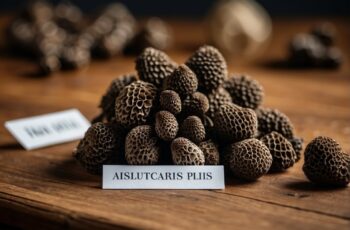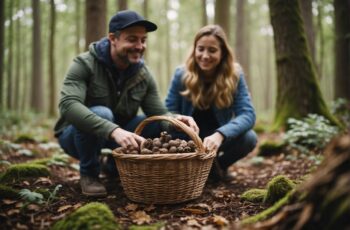Mushroom foraging is a rewarding outdoor pursuit that connects you with nature’s most intriguing fungal treasures. Before you venture into the woods to hunt for gourmet delights, it’s crucial to equip yourself with the right supplies. Quality gear not only ensures a successful foray but also prioritizes your safety. Whether you’re a seasoned forager or new to this ancient practice, the right tools can make all the difference.
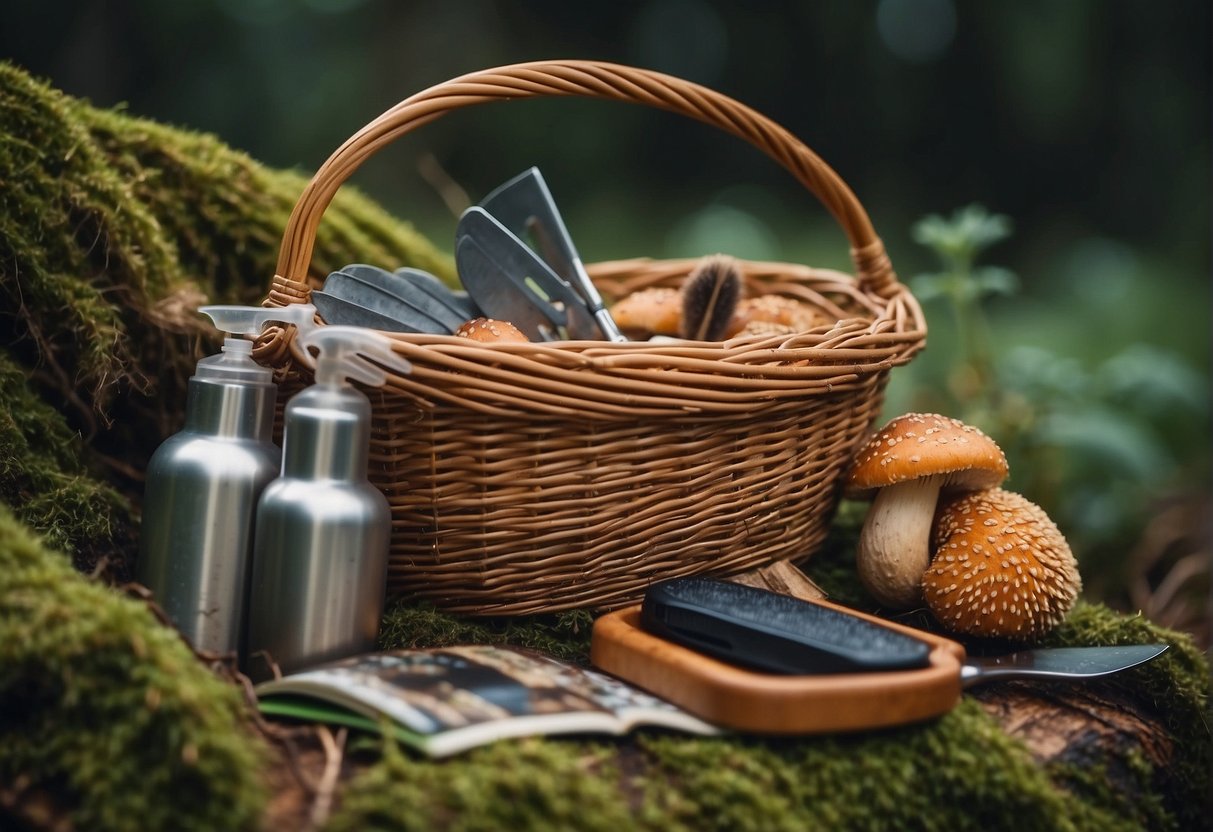
When you’re scouring the forest floor for edible fungi, certain essentials will enhance your experience. A sturdy basket or mesh bag is indispensable for carrying your finds while allowing spores to spread and promote growth. A foraging knife is tailor-made for gently harvesting mushrooms and can include a brush for dirt removal. Additionally, accurate identification is vital, and a field guide or mushroom foraging map can be your best ally in distinguishing the edible from the poisonous.
It’s essential to prepare for the elements, so durable waterproof shoes and weather-appropriate clothing are key. Consider bringing a compass or GPS device to navigate unfamiliar territory confidently. Mushroom foraging is not just about the harvest; it’s about enjoying the journey. With the right supplies on hand, you’re set for a fulfilling adventure in nature’s bounty.
Essential Gear for Mushroom Foraging
When you’re heading out to forage for mushrooms, having the right gear can make the difference between a fruitful endeavor and a fruitless hike. Your toolkit should help you find, identify, and safely transport your fungal finds back home.
Foraging Tools and Equipment
- Knife: An Opinel mushroom knife is a forager’s best friend. Its curved blade is designed to cleanly cut mushroom stems, and it often includes a brush for dirt removal.
- Scissors: A pair of scissors can be useful for snipping smaller mushrooms.
- Gardening Trowel: A gardening trowel is essential for digging out buried stipes and ensuring you don’t damage the mycelium.
- Mesh Bag: Carry a mesh bag to store your mushrooms. The mesh design allows spores to disperse as you walk, promoting further growth.
Navigation and Safety Items
- Compass or GPS Device: Always carry a compass or GPS device to navigate your way in the wilderness.
- First Aid Kit: Pack a first aid kit in case of cuts, falls, or other injuries.
- Weather Preparedness: Equip yourself with rain gear and clothing suited to the weather. Always wear long pants and boots with good traction.
Identification and Reference
- Field Guides: The National Audubon Society Field Guide to North American Mushrooms or “Mushrooms Demystified” by David Arora are indispensable resources for identification.
- Magnifying Glass: To closely examine mushroom features, carry a magnifying glass.
- Smartphone Apps: Many phone apps can assist in mushroom identification as well.
Harvesting and Storage Accessories
- Baskets: Use baskets to keep your mushrooms separated and to minimize bruising during transportation.
- Foraging Bag: A dedicated foraging bag helps with organization and preservation of your finds.
- Spore Prints: Bring along paper for taking spore prints, which are crucial for accurate mushroom identification.
Understanding and Identifying Mushrooms
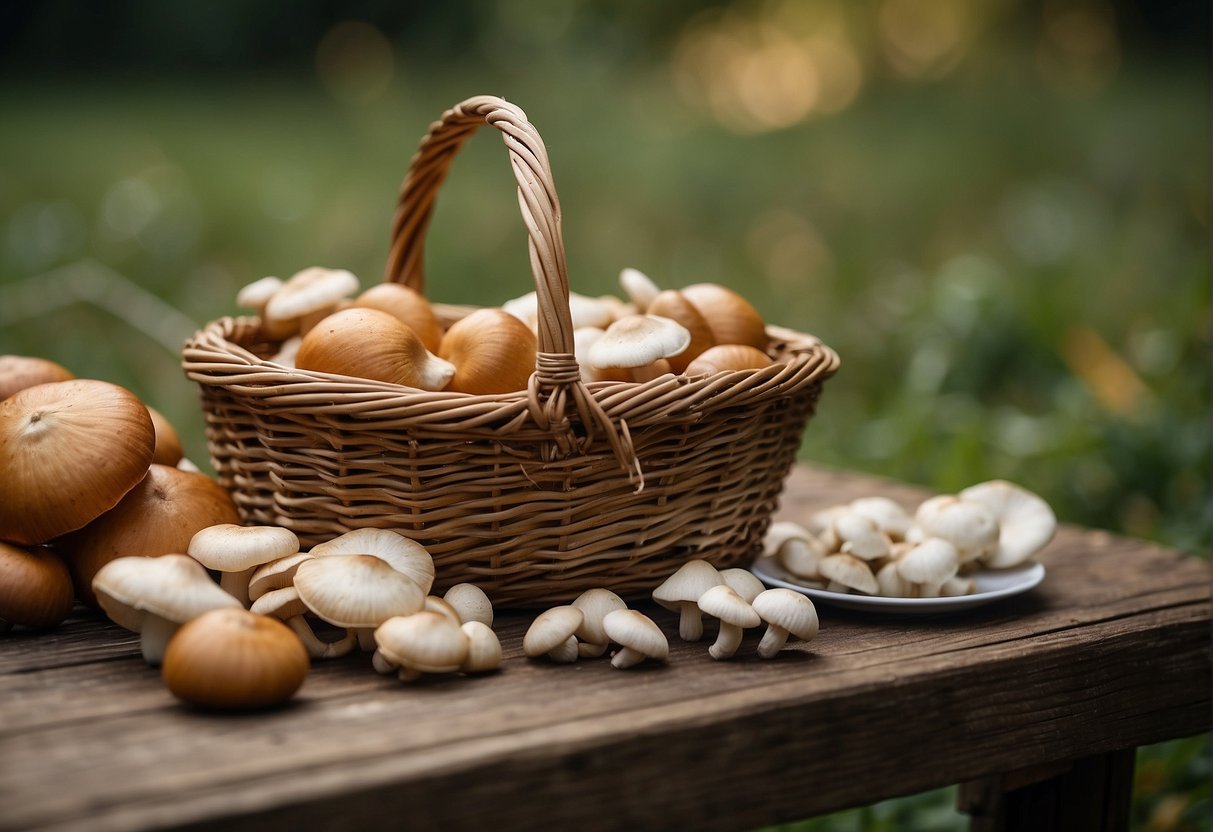
Before you set out on your foraging adventure, it’s crucial to distinguish between the vast array of edible and poisonous mushrooms. A solid foundation in mushroom identification can prevent unfortunate mishaps and enrich your foraging experience.
Edible vs Poisonous Varieties
Identifying which mushrooms are safe to eat and which could be harmful is paramount. Edible mushrooms like morels, chanterelles, and oyster mushrooms are coveted by foragers, but poisonous mushrooms such as the death cap and destroying angel pose a serious risk and can sometimes look deceivingly similar to edible varieties. Learning to recognize key features like cap shape, gill attachment, and spore prints is essential. For instance, edible portobello mushrooms have brown spores, whereas many poisonous mushrooms have white to cream spore prints.
Habitat and Seasons
Mushrooms thrive in different environments and conditions—some prefer the rich, damp soil of forests, while others grow in sunny meadows. Morels are often found in wooded areas in the spring, enjoying the moist soil, while porcini can be found during autumn. Temperature and humidity play a large role in the growth of fungi; therefore, knowing the typical seasons and habitats can guide you to where and when to look for certain mushrooms.
Mushroom Species Profiles
- Morels: Sought-after for their unique honeycomb appearance, typically found in spring.
- Chanterelles: Distinctive for their golden color and trumpet-like shape, found in late summer to early fall.
- Porcini: Famed for their rich flavor, these mushrooms grow in association with trees during the fall.
- Matsutakes: Valued for their spicy aroma, often nestled under pines in the late summer to fall.
- Chicken of the woods: Named for their meaty texture, these bright fungi grow on decaying wood.
By becoming familiar with individual species’ profiles, you refine your skills in mycology and ensure a more successful harvest next time you head into nature.
Foraging Practices and Ethics
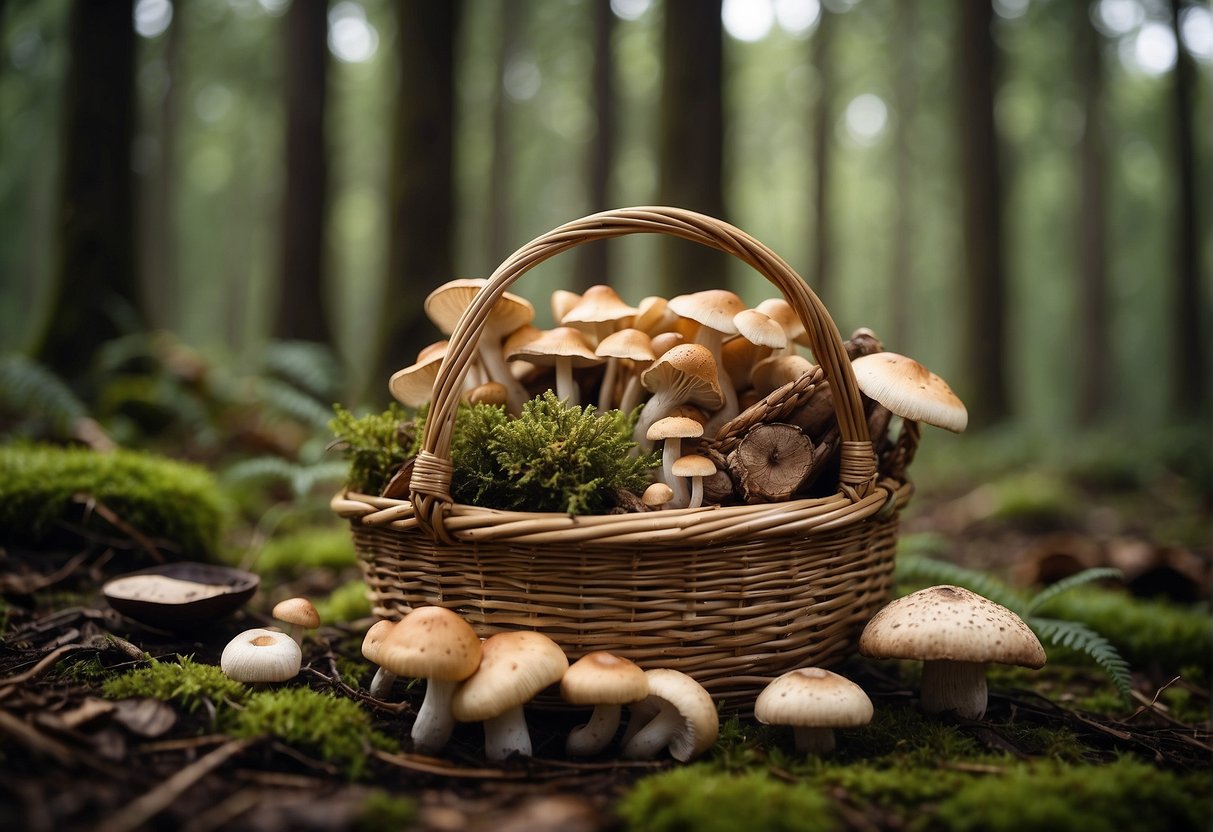
When venturing into the world of mushroom foraging, understanding sustainable techniques, the legal and ethical landscape, and leveraging technology can enhance your experience and protect the environment.
Sustainable Foraging Techniques
Your foraging kit should include a mesh bag, which allows spores to disperse and promote mycelium growth, ensuring future harvests. Always:
- Harvest selectively: Take only what you need and avoid over-picking.
- Identify correctly: Use reliable guides or iNaturalist and other foraging apps to identify edible species accurately.
- Cut thoughtfully: Use a knife to cut mushrooms above the ground to preserve the mycelium.
Legal and Ethical Considerations
The North American Mycological Association advocates for responsible foraging. Make sure to:
- Know local regulations: As a mushroom hunter, you must understand and abide by the laws and regulations that govern foraging rights and protected areas.
- Respect wildlife and habitats: Be aware of your environmental impact and practice foraging etiquette to minimize disturbance to wildlife and their ecosystems.
Foraging with Technology
Apps have become invaluable for modern foragers, offering the following benefits:
- Location Services: Find and document foraging spots.
- Identification Tools: Confirm the identity of finds with built-in databases and community feedback.
- Safety Advice: Access a wealth of knowledge and safety tips that can help you avoid toxic varieties.
Remember that ethical foraging is about balancing your enjoyment with the health of the ecosystems you explore.
Enhancing Your Foraging Experience

To truly savor the art of mushroom foraging, equipping yourself with the right knowledge and tools is crucial. This will ensure you’re prepared for diverse ecosystems, family adventures, recording your finds, and understanding the benefits of your harvest.
Foraging in Different Regions
When foraging in specific regions like the Pacific Northwest or the Midwest, familiarize yourself with the local regional ecosystems. You’ll need to adapt your gear to accommodate for humidity or dryness, and pack lights for cloudy forests or sun hats for open meadows.
- Pacific Northwest: Waterproof boots, moisture-wicking clothing, comprehensive regional mushroom guide.
- Midwest: Layered clothing for variable temperatures, a mushroom guide focused on prairie and deciduous forest species.
Foraging as a Family Activity
Foraging can be a wonderful way to spend time with your family in nature. Ensure that everyone, including children, has suitable gear like sturdy shoes and sun protection. A lightweight backpack for each person can hold snacks, water, and a personal field notebook or pencil to jot down findings.
- For beginners and families: Opt for child-friendly mushroom identification books and colorful pencils for note-taking.
- Emphasize safety tips like staying within sight and carrying whistles in case someone gets lost.
Documenting Foraging Journeys
Always carry a journal or camera to record the mushrooms you come across. Not only is it fun, but it also helps in tracking your growth as a forager. Share your experiences through photos or journaling, which can be an instructive tool for others interested in mushroom foraging.
- Recommended gear:
- Camera: Durable and ideally waterproof.
- Journal: Pocket-sized with a hard cover.
Health Benefits of Mushrooms
Highlight the health benefits of various mushrooms you collect to boost the enjoyment of your foraging. Some may be rich in food nutrients, provide fuel, or aid in heating your body. Research and identify the mushrooms you find to fully appreciate their health properties.
- Common healthful mushrooms:
- Crimini: Offer vitamins B2 and B3.
- Shiitake: Known for supporting the immune system.

